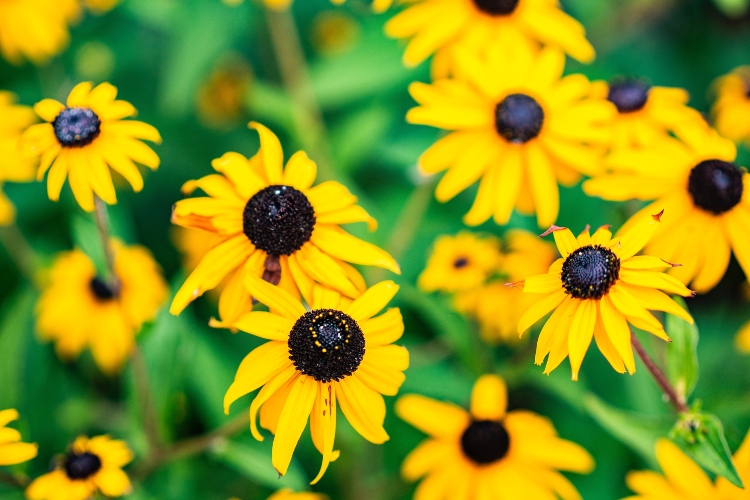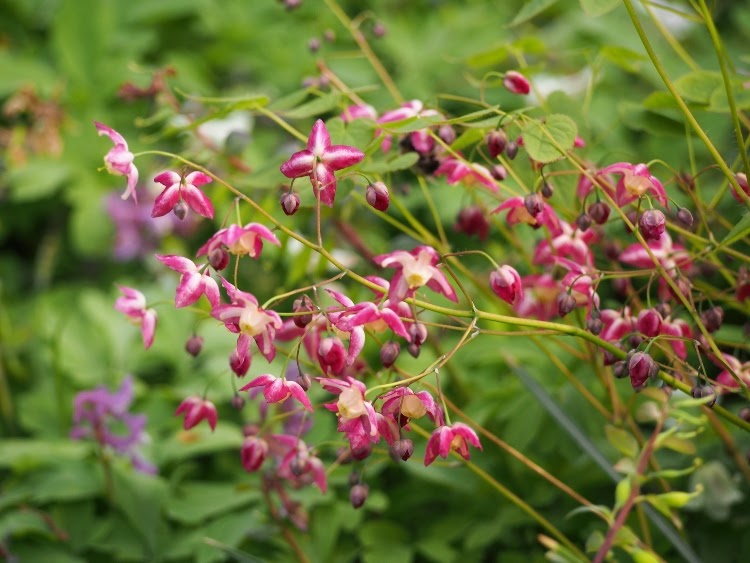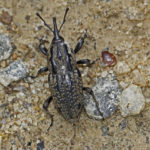
From Eden Park to Mount Adams to OTR, Cincinnati is booming with culture, eateries, history — and deer. Lots of them.
Curtail their visits to your yard in the most humane way possible by filling your landscape with deer-resistant flowers, trees, shrubs, and ornamental grasses.
While there’s no such thing as a completely deer-proof plant, there are plenty of options that are less appealing to their appetites.
We’ve rounded up a list of plants deer tend to avoid because of bitter taste, off-putting texture, or strong scent. Choose the ones you like best, and then, get to work revamping your Cincy garden design ideas.
17 Deer-Resistant Plants and Trees to Grow in Cincinnati
1. Yarrow (achillea millefolium)

The strong, herbal scent emanating from the yarrow plant, which most closely resembles that of rosemary and other spices, acts as a deterrent to deer. Its fuzzy leaves and stems play a part in that, too, we’re sure. Besides showy flowers and a pleasing aroma, yarrow is drought-tolerant and also offers medicinal benefits — the leaves can help with clotting and healing of skin wounds.
Examples of yarrow cultivars: Galaxy, Moonshine, and Red Velvet
Care: Easy; needs full sun and well-drained soil. Deadhead spent blooms.
Flowering: Yes, colors include yellow, red, pink, peach, white, and lavender
Cost: Purchase a potted yarrow plant for around $5.
2. Black-Eyed Susans

Black-eyed Susans are the perfect plant for a walkway border or container garden because they flower all summer long and into early fall. Their foliage, rough and hairy, is a natural deer repellent.
Examples of Black-eyed Susan cultivars: Early Bird Gold, Prairie Sun, and Maya
Care: Easy; grow in full sun and variety of soils. Water during dry spells to maintain flowers. Occasionally deadhead blooms and fertilize.
Flowering: Yellow, black, and orange blooms in summer and fall.
Cost: Depending on amount or size, black-eyed Susans can cost around $13 for seeds, $30 for roots, or $20 for a potted plant.
3. Foxglove

A biennial plant (meaning it has a two-year life cycle), foxgloves can grow up to 6 feet tall. From their stems sprout magnificent, cylindrical blossoms of purple, pink, cream, or white. Be aware, though, that all parts of this plant are toxic to people and wildlife; a characteristic that keeps deer away, too.
Examples of foxglove cultivars: Foxy, Temple Bells, and Polkadot Polly
Care: Low-maintenance; prefers partial shade and well-drained soil. Deadhead as needed.
Flowering: Late spring to early summer; pink, purple, cream, or white flowers
Cost: Seeds (around $3) and live plants (about $15).
4. Bishop’s hat (epimedium)

Along with heart-shaped or arrowhead-like foliage, the texture of which deer do not approve, bishop’s hat plants produce bold blooms that come in white, red, purple, yellow, pink, orange, or bicolored. Available as deciduous or evergreen plants, these perennials are perfect as a ground cover or ornamental accents.
Examples of bishop’s hat cultivars: Royal Flush, Pink Champagne, and Rubrum
Care: Low-maintenance and drought-tolerant; plant in partial to full shade.
Flowering: Yes; white, red, pink, yellow, purple, orange, or two-toned in spring.
Cost: Live plants will run you about $20 each.
5. Bluebeard (caryopteris)

The bluebeard’s lavender-scented leaves are welcomed by homeowners but shunned by deer. Giving off silvery-blue blooms in late summer/early fall, this drought-tolerant, shrubby plant works well as a garden border.
Examples of bluebeard cultivars: Snow Fairy, First Choice, and Summer Sorbet
Care: Low; prune in spring to maintain lower height. Needs full sun and well-drained soil.
Flowering: Blue flowers appear in late summer/early fall.
Cost: Purchase a potted bluebeard for around $8.
6. Bee balm (monarda bradburiana)

Bee balm’s herbal, minty scent is loathsome to deer, so the plant is perfect for your deer-resistant garden. Line your front walk or garden pathway with this perennial and relish its showy blooms from April to May.
Examples of bee balm cultivars: Fireball, Raspberry Wine, and Balmy Lilac
Care: Plant in well-drained soil located in full sun or partial shade.
Flowering: Yes, pink or white spring blooms.
Cost: Live plants can cost around $12 to $15 each.
7. Siberian bugloss (brunnera macrophylla)

The rough, silvery foliage is the showstopper of this perennial shrub — and it is a deer deterrent, as well. Grow Siberian bugloss as ground cover in your shade garden among hellebores, bleeding hearts, and hosta.
Examples of Siberian bugloss cultivars: Alexander’s Great, Jack Frost, and Diane’s Gold
Care: Easy; water regularly and mulch to maintain moisture. Fertilizer is not necessary.
Flowering: Blue flowers in early spring that last for one month.
Cost: Live plants will run you about $16 each.
8. Giant miscanthus (miscanthus floridulus)

Reaching heights of up to 14 feet, this drought-tolerant, ornamental grass works well as a living privacy screen or specimen plant. Slow-growing with bamboo-ish stems, the dark green blades of giant miscanthus are too rough for the palates of deer.
Examples of giant miscanthus cultivars: Stricta, Oktoberfest, and Grosse Fontane
Care: Minimal; needs full sun/well-drained soil. Water and fertilize as needed.
Flowering: Red or cream flowers in fall and winter.
Cost: Spend around $22 on an order of rhizomes for planting.
9. Daffodil (narcissus)

Not only do daffodils ward off deer with their citrusy, floral scent, but they’re also known to be toxic. Daffodils contain alkaloid lycorine, which is poisonous when eaten. Add bursts of color between shrubbery, plant as a border, or grow in a flower bed with tulips, hellebores, and irises.
Examples of daffodil cultivars: Pappy George, Paper White, and Poet’s Narcissus
Care: Low-maintenance; grow in full sun or partial shade. Thrives in well-drained soil.
Flowering: Yes. Yellow, white, orange, pink, or multicolored blooms in March and April.
Cost: Depending on the amount you want, bulbs can be purchased for about $15 to $80.
10. Bearded iris (iris germanica)

An easy-to-grow perennial, bearded irises bring forth large, showy flowers in colors ranging from blue, purple, red, or white to pink, orange, black, or yellow. Their sweet fragrance of fruity or even chocolate notes is off-putting to deer. These plants thrive best in full sun and well-drained soil.
Examples of bearded iris cultivars: Immortality, Sugar Blues, and Absolute Treasure
Care: Easy; do not mulch and prune leaves in fall.
Flowering: Yes; large, colorful summer blooms.
Cost: Rhizomes are sold for about $20 each.
11. Lilac chastetree (vitex agnus-castus)

This deciduous shrub can grow up to 20 feet tall and wide and thrives in full sun and well-drained soil. Come July, this plant will give off gorgeous purple, blue, pink, or white blossoms. Deer steer clear of the chastetree because of its peppery smell and taste.
Examples of lilac chastetree cultivars: Blue Diddley, Blushing Spires, and Alba
Care: Low-maintenance; natural rainfall is sufficient and no need to fertilize. Deadhead blooms and prune foliage as needed.
Flowering: Yes; purple, pink, blue, or white flowers in summer.
Cost: Depending on size, live plants can cost between $20 and $80.
12. Floss flower (ageratum houstonianum)

Floss flower’s pompom-like blooms last from summer through fall, but deer are never a bother due to the flower’s fuzzy texture. This annual plant is perfect for just about any garden scene from flower beds to borders to ground covers and pairs well with lamb’s ear, marigolds, and begonias.
Examples of Ageratum cultivars: Leilalni Blue, Redtop, and Summer Stars
Care: Low maintenance and drought-tolerant. Plant in moist soil and full sun.
Flowering: Yes; blue, lavender, pink, or white flowers from May through October.
Cost: You can buy a 12-pack of live, multicolored ageratum plants for around $10.
13. Tickseed (coreopsis)

Use tickseed as edging plants for pathways or to add beauty to a summer garden. The yellow, orange, purple, pink, white, red, or multicolored blooms attract pollinators, such as bees and butterflies. Their honey-vanilla scent, however, is a turn-off to deer.
Examples of tickseed cultivars: Big Bang Full Moon, Creme Caramel, and Heaven’s Gate
Care: Best in full sun, tickseed tolerates a variety of soil types. Water regularly and prune in late summer.
Flowering: Yes. Tickseed produces colorful flowers in summer.
Cost: Purchase a potted tickseed plant for around $15.
14. Sweet William (dianthus)

Smelling of cloves and floral notes, Sweet William’s fragrance is the reason deer avoid this plant. A lovely addition to your rock garden, this flowering plant attracts hummingbirds, butterflies, and other pollinators.
Examples of Sweet William cultivars: Superstar, Firewitch, and Tickled Pink
Care: Low-maintenance. Deadhead to encourage re-blooming. Needs little water, no mulch, and light fertilization during growing season.
Flowering: Pink, purple, red, or white, flowers in spring or summer.
Cost: Plan to spend around $15 for live plants.
15. Hellebores (helleborus)

These flowering perennials, also known as Christmas roses, are typically white or cream-colored, but different varieties can be pink, green, red, yellow, black, or purple. Flourishing in full or partial shade, these plants are toxic, and therefore, avoided by deer and other animals. Hellebores pair well with daffodils, phlox, and bleeding hearts.
Examples of hellebore cultivars: Wester Flisk, Citron, Black Hellebore
Care: Low-maintenance. Fertilize annually and water regularly during growing season.
Flowering: Yes; typically white, but can also be a range of other colors.
Cost: Buy live plants for around $20 to $30.
16. Bugleweed (ajuga reptans)

Bugleweed’s colorful flowers and evergreen foliage improves your home’s curb appeal, but the plant’s hairy stems have a bitter taste that keeps deer at bay. You can plant bugleweed almost anywhere, as it grows well in everything from full shade to full sun.
Examples of bugleweed cultivars: Catlin’s Giant, Chocolate Chip, Black Scallop
Care: Low-maintenance. There is no need to fertilize bugleweed, and regular rainfall should be sufficient water.
Flowering: Blue, purple, or white flowers in spring and summer.
Cost: Prices range from about $4 to more than $400, depending on the amount of seeds. Or, get a tray of plants for just around $12.
17. Sweet Woodruff (galium odoratum)

Fill space in your shade garden with this ground cover, which gives off a sweet-smelling scent akin to vanilla that’s unappealing to deer. The foliage, too, is aromatic — like hay that’s been recently mowed.
Examples of sweet woodruff cultivars:
Care: Low-maintenance. Plant in full shade or partial shade.
Flowering: Yes; white flowers in spring.
Cost: Get 200 seeds for about $7 or a large potted plant for almost $20.
Deer-Resistant Plants in Cincinnati: Other Things to Know
What other outdoor plants will deer avoid?
If food is scarce and deer are hungry enough, they’ll eat just about anything. That being said, below are even more plants (recommended by the Cincinnati Zoo & Botanical Garden) deer tend to avoid:
- Allium
- Cinnamon fern
- Mugo pine
- Lavender
- Barberry
- Common periwinkle
- Forsythia
When to Call in the Pros
Blessed with a green thumb? DIY it up! Visit local garden stores, such as White Oak Nursery, Greenfield Nursery, or Natorp’s, to stock up on your plant selection and get started.
But, if you need help deciding the right place for the right plant, enlist the assistance of an expert Cincinnati landscape professional. This pro will take a look at your yard and help determine the right sizes, plant options, and locations.
Main Photo Credit: Pixabay





